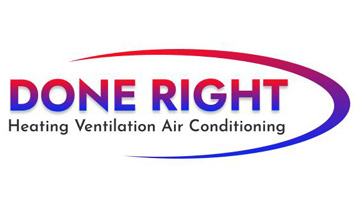
You shouldn’t need to give up comfort or spend a lot to keep your house at a refreshing temp during the summer.
But what is the right setting, exactly? We go over recommendations from energy experts so you can select the best temp for your family.
Here’s what we suggest for the most energy-efficient setting for air conditioning in Milwaukee.
Recommended Thermostat Settings for Summer
Most households find setting the thermostat at 72-73 degrees provides ideal comfort. However, if there’s a sizeable difference between your inside and outside temperatures, your utility expenses will be greater.
This is our advice based on the U.S. Department of Energy (DOE) and ENERGY STAR®.
While at home: 78 degrees. While that appears warm, there are ways you can keep your house cool without having the air conditioner on all the time.
Keeping windows and window treatments closed during the day keeps cool air where it needs to be—within your home. Some window coverings, like honeycomb shades or plantation shutters, are designed to give extra insulation and improved energy savings.
If you have ceiling fans in your home, the DOE says you can raise thermostat temperatures about 4 degrees hotter without compromising comfort. That’s since they refresh by a windchill effect. Since they cool people, not rooms, switch them off when you leave a room.
If 78 degrees still appears too hot on the surface, try conducting a test for a week or so. Get started by increasing your temperature to 78 degrees while you’re at your house. Then, gradually lower it while adhering to the advice above. You may be amazed at how comfortable you feel at a warmer temperature setting.
While away: 88 degrees. There’s no reason to keep the AC running all day while your house is vacant. Turning the temp 7–10 degrees higher can save you as much as 5–15% on your cooling costs, according to the DOE.
When you arrive home, don’t be tempted to put your thermostat colder than 78 to cool your home more rapidly. This isn’t effective and often produces a bigger electricity cost.
A programmable thermostat is a useful method to keep your settings controlled, but you have to set programs. If you don’t utilize programs, you run the risk of forgetting to increase the set temperature when you go.
If you need a convenient remedy, think over getting a smart thermostat. This thermostat links with your phone, so it knows when you’re at home and when you’re gone. Then it automatically modifies temperature settings for the best savings. How much exactly? Usually $180 yearly on heating and cooling, according to ENERGY STAR.
Another plus of installing a smart thermostat? You can use your phone to watch and change temperature settings from almost anywhere.
While sleeping: Around 70 degrees. While ENERGY STAR advises 82 degrees, that could be unpleasant for many families. The majority of people sleep better when their sleeping area is chilly, so that’s why the National Sleep Foundation advises 60–67 degrees. But that may be too cool, due to your clothing and blanket preference.
We suggest using a similar test over a week, setting your temp higher and slowly turning it down to select the ideal setting for your house. On pleasant nights, you might learn keeping windows open at night and running a ceiling fan is a superior solution than operating the air conditioner.
More Methods to Save Energy This Summer
There are added methods you can conserve money on cooling bills throughout warm weather.
- Upgrade to an energy-efficient AC system. Central air conditioners only work for about 12–15 years and become less efficient as they get older. An upgraded air conditioner can keep your residence comfier while keeping electricity bills small.
- Schedule annual air conditioner tune-ups. Regular air conditioner maintenance keeps your system running properly and may help it operate more efficiently. It might also help lengthen its life expectancy, since it enables pros to discover little problems before they create a major meltdown.
- Change air filters often. Read manufacturer instructions for replacing your air filter. A clogged filter can lead to your system short cycling, or run too often, and increase your electricity.
- Measure attic insulation levels. Nearly 90% of houses in the USA don’t have enough insulation, according to the Insulation Institute. Most southern climates need 13–14” of attic insulation, while northern climates should have 16–18”.
- Have your ductwork inspected. Ductwork that has come apart over time can seep cool air into your attic, walls or crawl space. This can create major comfort problems in your home, such as hot and cold spots.
- Seal cracks, doors and windows. Keep humid air in its place by sealing openings. You can also caulk or weather strip doors to trap more conditioned air indoors.
Conserve More Energy During Hot Weather with Done Right Air
If you need to save more energy during warm weather, our Done Right Air pros can assist you. Reach us at 414-207-4034 or contact us online for additional details about our energy-saving cooling products.
